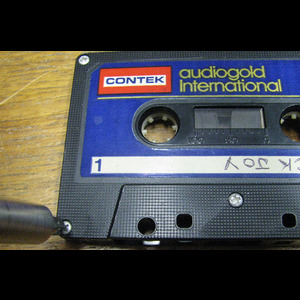Via Sciencemuseumdiscorery.com
Step One:
Fish out an old Walkman from you or your parent’s attic, shed or cupboard-under-the-stairs. Everyone has one lurking around somewhere.
Step Two:
Buy a cassette from your local charity shop. Do judge a book (cassette) by its cover, but make sure that you also check that it is held together with screws, as sealed plastic ones are much harder to open. I chose an Ottawan Best Of, partly because it had a great cover, and partly because there wasn’t much else to choose from. However, the cassette turned out to be sealed with plastic, so I had to resort to my back-up choice, a home-recorded copy of the soundtrack to the (terrible) 1977 film Black Joy, one of the few examples of British Blaxploitation cinema.

(Note the lack of screws on the Ottawan cassette!)
Step Three:
Have a quick browse while you’re there.
Step Four:
Find a tidy place to work (this gets messy) and gather up all of the necessary equipment: a ruler, some sellotape, a pair of scissors and a screwdriver small enough for the cassette’s tiny screws. I have chosen the Science Museum curator’s library.
Step Five:
Take out the cassette’s screws, putting them carefully to one side.
Step Six:
Take off the top half of the cassette, being careful not to disturb any of its mechanisms (the funny metal bit at the front).
Step Seven:
Take out the tape and detach the ends from the white spools.
Step Eight:
Cut a 23.5cm chunk out of the tape.
Step Nine:
Carefully join the two ends of this strip of tape together with selotape. It is worth taking your time over this bit as the smoother the join is the smoother the sound of the loop will be. Although conversely, sometimes a rhythmic clunk at the end of each repetition can be just what a loop needs to give it shape. I recommend using a tiny piece of selotape on the underside of the tape, and trimming off any excess.
Step Ten:
Carefully place the loop back inside the tape, hooking it around the four white spools: both the larger central pair and the smaller two on each side.
Step Eleven:
Position the tape so that it hooks round all of the spools but is also in front of the cassette’s metal mechanism. It must be held taut, or else it won’t play smoothly.
Step Twelve:
Close up the tape and re-screw the screws. Make sure that the tape is held behind these plastic teeth at the front and not trapped in them.













